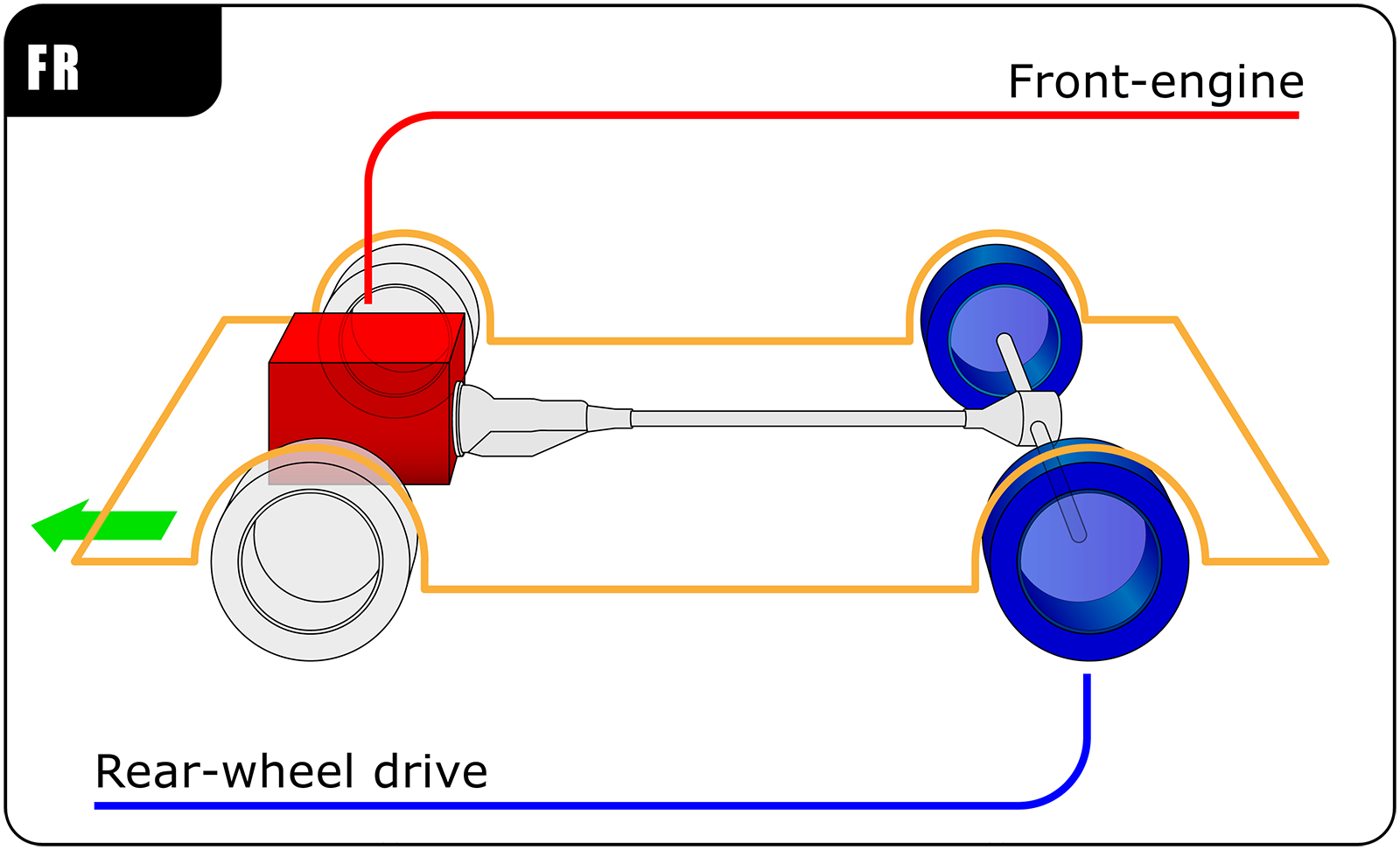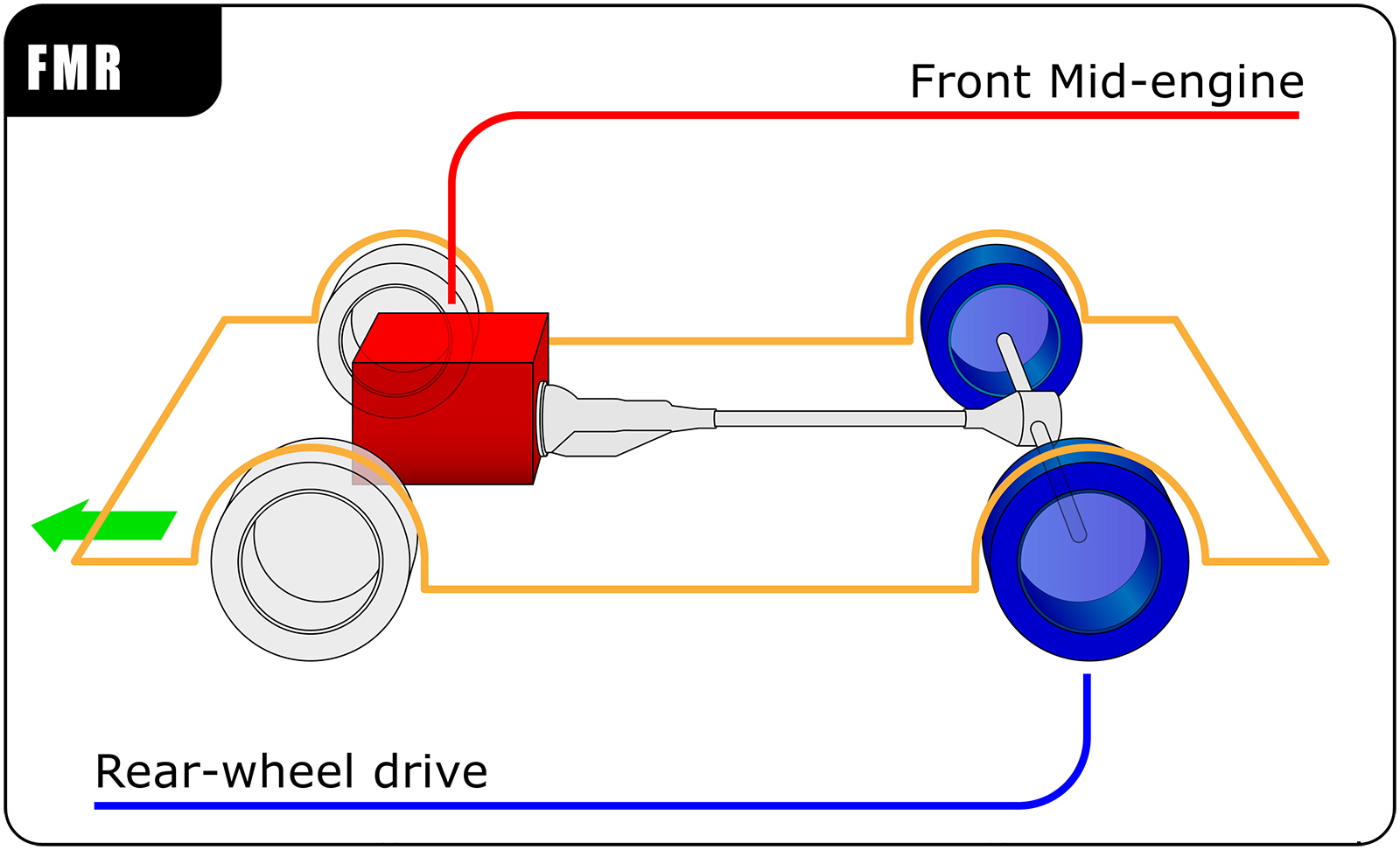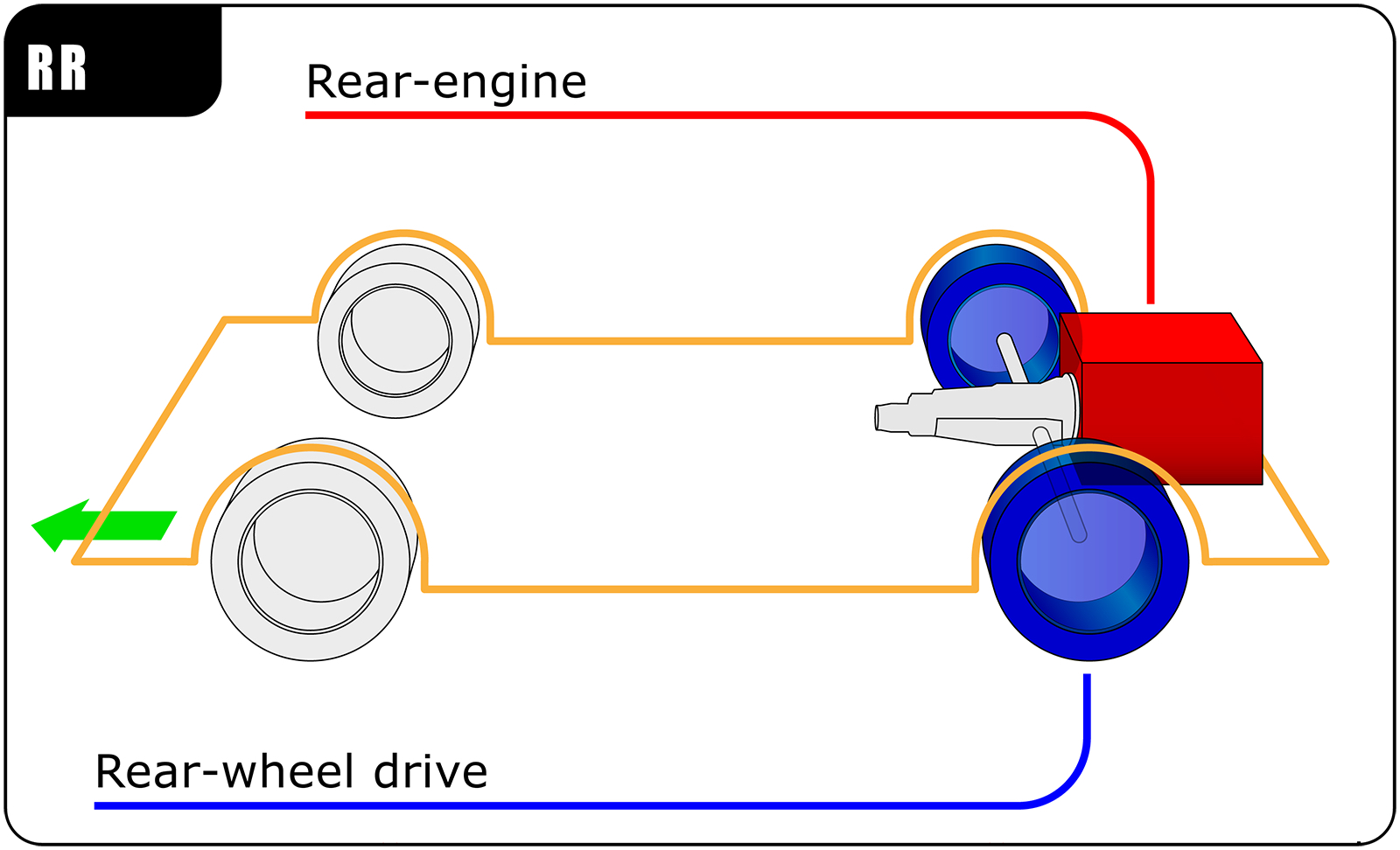Every car regardless of price, performance, and body style is either front-, rear-, or all-/four-wheel drive. There is no such thing as a no-wheel drive car, except for maybe the foot-powered one Fred Flintstone drove.
Further reading
Front-wheel drive refers to a car in which the transmission sends the engine’s power to the front wheels. Rear-wheel drive is the opposite; the engine spins the rear wheels. Four- and all-wheel drive cars have power at all four corners. Each layout comes with its own set of pros and cons that affect the way the car drives in a variety of conditions. We’ll start by covering the basics before diving into which layout is best depending on your driving style.
What is rear-wheel drive (RWD)?
Rear-wheel drive, often abbreviated as RWD, is the oldest layout. It denotes a configuration in which the engine sends its power through a transmission to the rear axle of a vehicle. The 1885 Benz Patent-Motorwagen, which is often considered the very first car, was rear-wheel drive. In America, a vast majority of cars were rear-wheel drive through the 1970s. The configuration is becoming increasingly rare in 2020, however. Sports cars like the Toyota Supra keep it alive, and some high-end sedans (like the BMW 5 Series and the Porsche Panamera) stay loyal to it.
What is front-wheel drive (FWD)?

Front-wheel drive, often abbreviated as FWD, denotes a configuration in which the engine sends its power to the front wheels. Front-wheel drive surfaced during the 1900s on various prototypes, and it merged into the mainstream during the 1930s when French automaker Citroen released the Traction Avant (which means, literally, front-wheel drive). Saab and Audi precursor Auto Union used the layout early on, too, but the most famous — and most influential — front-wheel drive is undoubtedly the original Mini. Small economy cars began shifting to front-wheel drive during the 1970s, and most new cars sold in 2020 use this configuration.
What is all-wheel drive/four-wheel drive (AWD/4WD)?

All-wheel drive, often abbreviated as AWD, and four-wheel drive, often abbreviated as 4WD, denote a configuration in which the engine’s power gets sent to the four wheels for maximum traction. Four-wheel drive is normally used to describe a type of heavy-duty system found on trucks and SUVs, while all-wheel drive often refers to a more basic and less rugged technology that equips sedans, station wagons, and crossovers. Most pickups and SUVs remain four-wheel drive in 2020, and a growing list of cars offer all-wheel drive either standard or at an extra cost.
There is usually a mechanical connection between the front and rear axles, but electric and hybrid cars (like the gorgeous Polestar 1) sometimes offer what’s called through-the-road all-wheel drive. Both axles are driven, but there is no connection between them. Engineers achieve this by placing an electric motor over each axle, or by having an engine spinning the front wheels and either one or two motors zapping the rear wheels into motion.
See our piece on the differences between four-wheel drive and all-wheel drive for a closer look at both systems.
Which is better?

That’s one of the most loaded questions in the automotive world, and the answer largely depends on who you ask. The truth is, it largely depends on the situation and the application of the system, and there is no right or wrong answer. Any type of four-wheel-drive system is perceived as superior in low-traction situations. That makes it most favorable for those who live in regions where it snows quite a bit or where paved roads are a luxury. More recently, all-wheel drive has become more prominent in performance applications as a way to increase traction.
When it comes to two-wheel drive layouts, and the argument of front-wheel drive versus rear-wheel drive, the debate becomes even more complicated. Due to its age and history with the origin of the automobile, rear-wheel drive was once the most prominent type of drivetrain because of its simple and cost-effective design. As technology evolved, cheaper development costs made front-wheel drive more popular due to packaging and fuel economy reasons. That’s because front-wheel drive vehicles require fewer parts since the entire drivetrain is typically packaged as one unit that sits at the front of the vehicle. There’s no such thing as a mass-produced, rear-engine, front-wheel drive vehicle because it makes zero sense in terms of engineering complexity, though some rear-engined vehicles are four-wheel drive (like the Volkswagen Vanagon Syncro).
As for which is better, again, it depends on the situation. Both front-wheel drive and rear-wheel drive vehicles have their disadvantages, but both have proven themselves well, especially when the car is equipped with the proper tires for the weather.
Bred for the right conditions

How well each configuration performs in inclement weather is what concerns most vehicle buyers, because motorists want a car that can get them from point A to point B reliably. All-wheel drive is usually the better solution, but not every car offers the option and the ones that do often carry a price premium.
Front-wheel drive vehicles tend to perform better in everyday driving situations, particularly during inclement weather. That’s because both the engine and the transmission sit over the front axle, adding weight to the drive wheels, which increases traction for slippery situations. Most manufacturers of standard cars resorted to front-wheel drive because they’re cheaper to make, more efficient in operation, and provide better traction for the everyday driver.
Rear-wheel drive vehicles, despite having the original layout and being preferred in the earlier days of motoring, can become trickier to handle when bad weather sets in. Not everyone is capable of handling a rear-wheel-drive vehicle in a snowstorm, for example. It’s a layout that eats up interior space, too, because channeling a front-mounted engine’s power to the rear wheels requires punching out a bulky transmission tunnel that runs down the center of the cabin.
In many ways, your environment and daily routine will dictate which drivetrain is right for you. If you live in either a fair or mild, four-season climate with modest levels of snow and rain, you can get away with pretty much any drivetrain choice. If you live in northern Canada, odds are you’ll want four-wheel drive.
Performance driving behavior

All three layouts have their advantages and disadvantages when it comes to driving fast.
Front-wheel drive vehicles tend to exhibit what’s called understeer, or when the vehicle resists its ability to steer because the front axle is overloaded. This is what we know as the sensation of “turning the steering wheel and nothing happens,” and Newton’s first law of inertia physics comes into play. That’s because front-wheel drive vehicles put a lot of demand on the front axle, requiring it to both deliver power and manage steering, which can easily overwhelm the front tires. Torque steer is another phenomenon you might experience.
Front and rear-wheel drive vehicles offer exceptional steering capability, as they are both used and tested in many different motorsports. The first Mini Cooper is an excellent example of a front-wheel-drive car, winning the Monte Carlo Rally and recently reigning supreme in the British Touring Car Championship. Competitors must follow the rules in these famous races and are only allowed to drive front-wheel-drive cars.
Although front-wheel-drive automobiles may perform well, we favor rear-wheel drive because of their incredibly versatile design and functionality. We love these vehicles because you have the freedom to put the engine anywhere within the car. Whether they want the engine in the back of the car like the Porsche 911 or the original Volkswagen Beetle or want to place it in the front, manufacturers can do whatever they please.
Rear-wheel drive is a balanced product. The best rear-wheelers are designed to please the majority of people and are well-designed driving options that offer incredible performance quality for any driver. It’s easy to grasp how to handle these vehicles, thanks to their excellent weight distribution. However, we want to warn you about a few surprises you’ll face when choosing a rear-wheel-drive car. A common issue for many drivers is oversteering, as the rear wheels control the drive action. This can be challenging to get used to, but just be extra careful when you take a curve. Oversteering can cause the wheels to lose traction, which leads to a shift of weight that can break the back end loose. Overall, it shouldn’t be a serious cause for concern, as oversteering is relatively easy to recover from. In addition, oversteering is preferred during performance driving.






